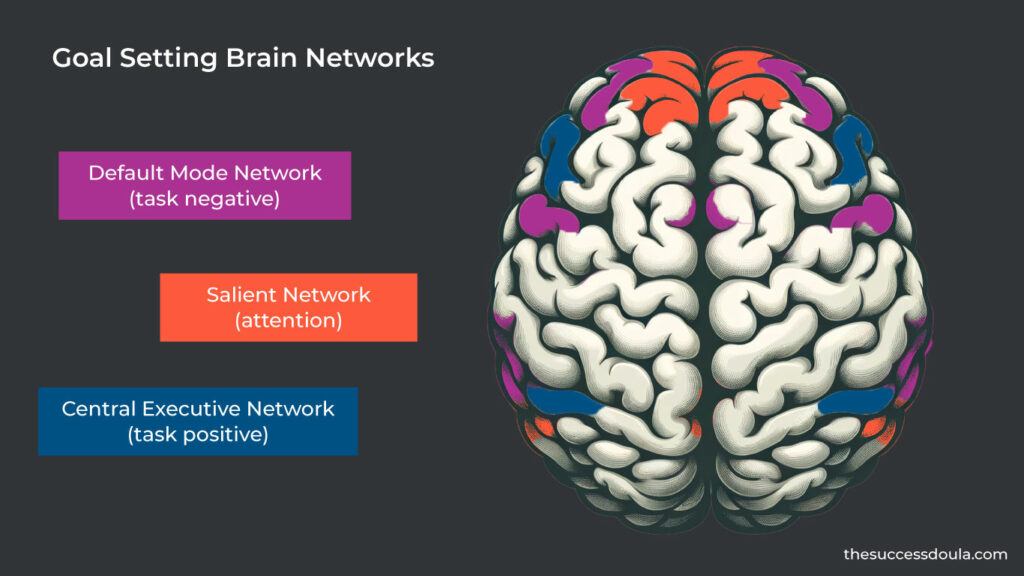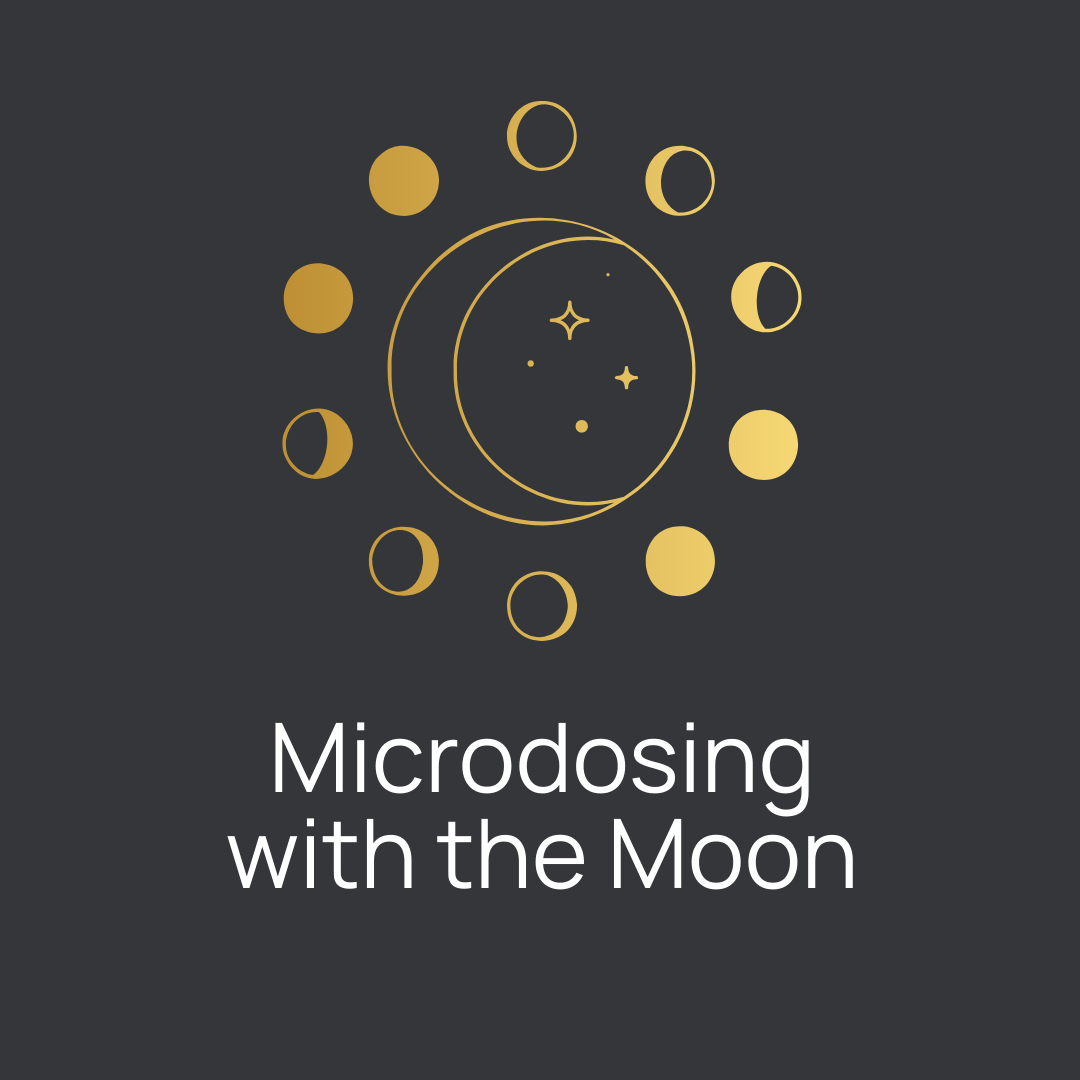Understanding Goal Setting with ADHD
Attention-Deficit/Hyperactivity Disorder (ADHD), with its distinctive neural pathways, presents a divergent landscape that influences an individual's capacity to navigate attention, organization, and emotional regulation. While ADHD presents unique challenges, it also brings forth a set of cognitive strengths that can be harnessed for success, particularly in the realm of entrepreneurship and goal setting.

Neurobiological Aspects of ADHD
Understanding the neurobiological aspects of ADHD is crucial for individuals to recognize that the executive dysfunction they experience is not a deficit or disorder, but rather a different way of thinking. ADHD is characterized by differences in brain structure and function, particularly in areas related to attention, executive function, and emotional regulation.
Individuals with ADHD may experience variations in the levels of the neurotransmitter dopamine. In particular dopamine plays an essential role in transitioning from the Default Mode Network to the Central Executive Network and how individuals with ADHD process information and engage in goal-directed behavior.
The Default Mode Network (DMN) is a collection of interconnected brain regions that are active during resting states. It is largely responsible for self-reflection, introspection, and inner thought processes. The DMN is often referred to as the “Task Negative” network, as it is active whenever an individual is not engaged in some sort of goal-oriented task. This network is responsible for facilitating default tasks that do not require active thinking, such as daydreaming, mind-wandering, and memory retrieval. The DMN is believed to be the foundation of our sense of self and plays a crucial role in our daily behaviors by retrieving memories and taking actions based on the outcomes of those memories.
On the other hand, the Central Executive Network (CEN) is a set of brain regions that become active when an individual is engaged in goal-oriented behavior. It is the network responsible for executive functions, which are cognitive abilities that allow us to manage and organize our behavior. The CEN is often referred to as the “Task Positive” network, as it helps individuals complete their to-do lists and engage in logical information processing. This network is the foundation of how individuals interact with the external world and is crucial for sustaining attention and detecting stimuli in the environment.
When our senses detect something in our environment that we should pay attention to, the salient network (also known as the attention network) shifts the brain’s focus from self-referential thoughts towards external goals. The shift requires dopamine.
If there is not enough dopamine in the brain, the ability to switch from the default mode network (DMN) to the Central Executive Network (CEN) is hindered if not impossible. To the outside observer, it might look like someone can’t stay focused or lacks motivation, but in reality, this represents a fundamental difference in how the ADHD brain manages and allocates attention and energy. This understanding is vital, not only in reducing the stigma associated with ADHD but also in tailoring approaches to productivity and goal achievement that align with this unique neurobiological makeup.

Research from West Virginia University has shed light on the cognitive advantages of individuals with ADHD in entrepreneurship, challenging traditional views of ADHD as a deficit and highlighting the unique cognitive strengths possessed by individuals with ADHD. Associate Professor Nancy McIntyre’s research emphasizes the development of “resource-induced coping heuristics,” where individuals with ADHD effectively manage and utilize vast amounts of information, potentially leading to entrepreneurial success [1] .
Individuals with ADHD possess a unique blend of curiosity, creativity, and innovation, which are often key drivers of success. This creativity and innovation, combined with their predisposition to speedy cognitive processing and quick decisions, enable individuals with ADHD to continually scan their environments and swiftly shift their attention from old data to new. Moreover, their high degree of adaptability allows them to change course when necessary, challenge their own assumptions, and double-check their comprehension about a problem or task. These attributes collectively contribute to the entrepreneurial potential of individuals with ADHD, challenging traditional views and highlighting the cognitive advantages they possess in the realm of entrepreneurship and beyond[1].
Challenges in Goal Setting for Individuals with ADHD
Individuals with ADHD face unique challenges in setting and achieving goals, often due to the neurobiological underpinnings of their condition. These challenges can manifest in various ways, significantly impacting one's ability to pursue and attain personal and professional objectives.
Productive Procrastination
Productive procrastination, a common experience for many individuals with ADHD, involves engaging in seemingly productive activities that are unrelated to their primary goals and intentions. Imagine needing to work on an important project for your business, such as writing the content for the sales page of a new program you’re launching. The overwhelming importance of the task can lead to intense feelings of stress and uncertainty. This stress may stem from a fear of failure, a lack of confidence in one’s abilities, a deep-seated concern about not meeting the expectations of being a successful entrepreneur, or a thousand other unhelpful thoughts. This internal pressure can create a sense of overwhelm and contribute to a subconscious avoidance of the task at hand.
Imagine you need to do an important project for your business, such as writing the content for the sales page of the new program you're launching (task positive. You are super excited about the new project. It is fully aligned with your keystones and the big vision you have for your business and life.
As you open ChatGPT to start working on your content, you remember that you wanted to learn how to use ChatGPT to create an image for your blog post about your new program. So you go to YouTube, do a few searches and 2 hours later you have a decent image and a half written blog post.
While this activity may have some value, it ultimately serves as a distraction from the primary task at hand. Subsequently, you might find yourself drawn to other seemingly productive tasks, such as folding laundry or organizing your workspace, under the guise of creating a conducive environment for working on the sales page. This pattern of engaging in secondary tasks to avoid the primary one is productive procrastination.
It’s important to recognize that productive procrastination is not simply a matter of poor time management or lack of discipline. Instead, it is often a manifestation of the stress response cycle, particularly in individuals with ADHD. When faced with a task of overwhelming importance, the stress response can lead to a decrease in energy available to handle the situation effectively. This can result in a tendency to engage in activities that provide a sense of accomplishment or control, even if they are not directly related to the primary task.
Moreover, productive procrastination can be exacerbated by the unique cognitive profile of individuals with ADHD. The constant influx of information and the predisposition to rapid cognitive processing can contribute to a pattern of shifting attention from one task to another, leading to difficulty in maintaining focus on the primary goal. This cycle of avoidance and distraction can hinder progress on important tasks, despite engaging in seemingly productive activities.
Analysis Paralysis
Analysis paralysis is a common challenge experienced by individuals, particularly those with ADHD, where the individual becomes stuck in a state of overthinking and uncertainty, unable to decide on the best course of action.
This often stems from a fear of making the wrong decision or from being overwhelmed by the possibilities. The “Freeze” stress response, or analysis paralysis, is an active state of stress where the person knows they are stressed and overwhelmed, yet they struggle to take action. The lack of dopamine to facilitate the transition from the default mode network to task-positive thinking further exacerbates this state, making it challenging to shift focus and engage in decisive action [2] [12] .
For example, imagine needing to make a crucial decision for your business, such as choosing the marketing strategy for your new program launch. As you sit down to evaluate the options, you find yourself overwhelmed by the multitude of possibilities and the fear of making the wrong choice. This state of heightened uncertainty and overthinking prevents you from taking decisive action, leaving you feeling stuck and unable to move forward.
In this state of analysis paralysis, the individual experiences a heightened level of self-referential thinking. Also known as self-referential cognition, refers to the process of focusing on oneself, one’s own experiences, emotions, and thoughts. It involves interpreting external events and information in relation to oneself, often leading to a heightened self-awareness and introspection. This type of thinking can be characterized by a strong focus on personal experiences, beliefs, and emotions, and it often involves evaluating oneself in comparison to others or to certain standards.
In the context of analysis paralysis and ADHD, self-referential thinking can contribute to overthinking and rumination, leading to a heightened level of self-criticism and self-doubt. Individuals experiencing analysis paralysis may find themselves caught in a cycle of self-referential thoughts, where they continuously evaluate their own abilities, decisions, and potential outcomes, often leading to a sense of being stuck and unable to move forward.
The unique cognitive profile of individuals with ADHD, characterized by rapid cognitive processing and difficulty in maintaining focus, can further exacerbate the challenges associated with shifting focus and engaging in decisive action. Recognizing the underlying factors contributing to analysis paralysis can empower individuals to develop tailored strategies for managing their cognitive responses and effectively addressing their primary goals and intentions.
Future Fantasizing aka Maladaptive Daydreaming
Future fantasizing, also known as maladaptive daydreaming, involves indulging in elaborate and vivid fantasies about an extraordinary life without considering the practical steps needed to achieve those aspirations. It often entails immersing oneself in a rich inner world, neglecting the current reality and responsibilities. For instance, it could involve spending hours searching on Pinterest or scrolling through Instagram, daydreaming about the future and all the things one will do once their goals are achieved.
Dreaming of fun, exciting things in the future feels good. This behavior can lead to a false sense of accomplishment and fulfillment without taking tangible steps toward actualizing those dreams. Moreover, future fantasizing can contribute to toxic positivity, where individuals focus solely on positive thoughts and dismiss or invalidate any negative emotions or challenges. This can create an unrealistic and unsustainable mindset, leading to a lack of motivation to address real-life tasks and responsibilities.
The role of dopamine is crucial in this context. Low levels of dopamine can keep individuals in a daydreaming state, preventing them from transitioning to task-positive actions and productive thinking. This can hinder their ability to focus on present tasks and engage in goal-oriented behavior, ultimately impacting their productivity and overall well-being.
When it comes to setting goals, having a habit of future fantasizing makes it difficult to set realistic goals particularly because the needed details to accomplish the goals are usually missing. In the world of productivity, people are often told to create SMART goals (Specific, measurable, actionable, realistic, and timely) but nearly every part of setting a SMART goal is unrealistic for someone with ADHD.
However, having a clear understanding of your big vision is essential in creating goals. Luckily, with a little practice and direction, someone with ADHD will excel at seeing the possibilities in the future and can use intrinsic motivation to stay on track towards achieving their goals.
Dopamine Chasing and Time Blindness
Often called “Shiny Object Syndrome”, dopamine chasing is a common challenge for people with ADHD. This condition is characterized by an insatiable pursuit of newness—be it a groundbreaking idea, a hobby, or a business venture—often at the expense of current commitments and responsibilities. But what exactly propels this relentless search for the novel, and how can those with ADHD navigate this terrain?
You probably guessed it by now… dopamine! Well, the lack of dopamine.
For entrepreneurs and creatives with ADHD, this need to explore new things can be a double-edged sword. On one side, it fosters innovation, resilience, and the ability to think outside the box—traits invaluable in the entrepreneurial world. On the flip side, it can lead to a cycle of unfinished projects, missed deadlines, and a pervasive sense of dissatisfaction. The thrill of the new often overshadows the commitment required to see tasks through to completion.
The impact of low dopamine levels on time perception is significant, as the constant seeking of dopamine-inducing activities can lead to unrealistic time perception. Low dopamine levels disturb the connectivity within and between regions of the DMN, specifically the medial prefrontal cortex and the posterior cingulate cortex. This can result in a disconnect between the perception of time and the actual time required for goal-oriented behavior and task completion
The interplay between dopamine-seeking activities, time perception, and goal setting in individuals with ADHD underscores the need to consider the impact of dopamine deficiency on time-related tasks and the formulation of realistic goals.
Tailored Approach to Goal Setting for Individuals with ADHD
Navigating the landscape of ADHD requires a nuanced understanding of its challenges, but it also calls for innovative strategies that capitalize on the unique strengths of a neurodivergent mind. The key to successful goal setting lies not in fighting against ADHD but working with it. Here’s how:
Structured and Flexible: Creating a strict schedule with very little room for distractions or changes isn’t going to work. Not having enough structure and routines isn’t going to work either. Spending time to create and develop an ideal weekly schedule and a minimal schedule with a realistic timeline will help you stay on track.
Focus on Wins: Celebrating small victories provides little boosts of dopamine and keeps the momentum going while building confidence in one’s ability to achieve bigger objectives.
Leverage Hyperfocus: While ADHD can make it challenging to sustain attention, it also allows for periods of intense focus, known as hyperfocus. Identify areas of strong interest or passion and align your goals with these areas to take advantage of this unique state of concentration.
Create a Supportive Environment: Surround yourself with people who understand and support your journey. Whether it's a mentor, coach, or peer group, having accountability partners can provide encouragement and remind you of your goals when distractions arise.
Neuro Reprogramming: Our limiting beliefs and self-talk can sabotage our goals before we even start. By becoming aware of disempowering stories and reframing them, we can rewire our brain's neural pathways in support of our goals.
Refine and Reflect: Regularly review your goals and the strategies you’ve employed to meet them. Reflecting on what works and what doesn’t allows for continuous refinement of your approach, making each attempt more effective than the last.
A New Perspective on Goal Setting with ADHD
By recognizing the strengths inherent in ADHD, such as creativity, resilience, and the ability to think outside the box, individuals can harness these qualities for success. The journey toward achieving one’s goals with ADHD is not about adhering to conventional methods but about finding and refining strategies that align with one’s unique cognitive style.
By shifting the narrative from one of deficit to one of difference, we open up a world of possibilities where the ADHD neurodivergent mind is not a barrier but a bridge to achieving remarkable goals.
Get the FREE Goal Setting with ADHD Checklist
References:
- Lanivich, S.E., Moore, C. and McIntyre, N. (2024), "The effects of neurodiversity on cognitive attributes of entrepreneurs", International Journal of Entrepreneurial Behavior & Research, Vol. ahead-of-print No. ahead-of-print. https://doi.org/10.1108/IJEBR-12-2022-1079
- Franklin, M. S., Mrazek, M. D., Anderson, C. L., Johnston, C., Smallwood, J., Kingstone, A., & Schooler, J. W. (2017). Tracking Distraction: The Relationship Between Mind-Wandering, Meta-Awareness, and ADHD Symptomatology. Journal of Attention Disorders, 21(6), 475-486. https://doi.org/10.1177/1087054714543494
- Weissenberger, Simon & Schönová, Kateřina & Büttiker, Pascal & Fazio, Raffaele & Sebalo Vnukova, Martina & Stefano, George & Ptacek, Radek. (2021). Time Perception is a Focal Symptom of Attention-Deficit/Hyperactivity Disorder in Adults. Medical Science Monitor. 27. 10.12659/MSM.933766.
- Theodor-Katz, N., Somer, E., Hesseg, R. M., & Soffer-Dudek, N. (2022). Could immersive daydreaming underlie a deficit in attention? The prevalence and characteristics of maladaptive daydreaming in individuals with attention-deficit/hyperactivity disorder. Journal of Clinical Psychology, 78, 2309–2328. https://doi.org/10.1002/jclp.23355
- Sônego, M., Meller, M., Massuti, R., Campani, F., Amaro, J., Barbosa, C., & Rohde, L. A.. (2021). Exploring the association between attention-deficit/hyperactivity disorder and entrepreneurship. Brazilian Journal of Psychiatry, 43(2), 174–180. https://doi.org/10.1590/1516-4446-2020-0898





